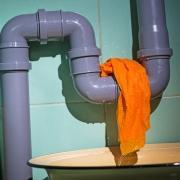Tips for Detecting Water Leaks
In any home, silent water leaks are a serious problem. A pipe or toilet leaking are obvious faults, but sometimes there are leaks difficult to detect that cause damage to the property, in addition to wasting large amounts of water.
When you are sure that there is a water leak, you will have to detect where it is coming from immediately. Start by checking the sink, shower, toilet, connections of the washing machine, and tub. It is common that water leaks occur in the keys, which are easily detectable. However, they can also be the result of improper installation. Another reason why a water leak can take place may be due to deterioration of the connections.
Sometimes detecting water leaks in appliances is not easy because water accumulates under it. If you notice that there are bumps or moisture along the power lines, there is probably a water leak.
If you do not have the necessary tools to correct these small leaks, call a trusted plumber to resolve these problems as soon as possible, since unattended water leaks can be dangerous and harmful.
Eye in the bathroom
The leakage of water in the toilet is one of the most common at the domestic level and unfortunately it is a problem that affects us all.
A toilet in poor condition can waste up to five thousand liters of drinking water per month. And beyond the expense that we must assume there is also a great social damage, because water is wasted that other families need.
But there are simple techniques to detect possible leaks. If done at least once a month, you will avoid losing large amounts of drinking water and money as well.
ABC’s to detect leaks
It is easy to notice if you have an internal problem of water leakage, follow these three points to detect them:
Sanitary
Check for leaks in the toilet by depositing a few drops of dye in the tank; If the color appears in the water closet without having pulled it, there is a leak that must be repaired immediately. Usually with this type of leakage you can hear the running of the water in the toilet. The toilet where the highest amount of water consumption is inside a house (41%).
Internal pipe
If your water consumption rises unjustifiably, close all the water valves of the house and if the meter continues to dial, call the plumber immediately, in your house there is an invisible leak.
External pipe
Periodically check the conditions of the water tank float and cistern. When it breaks down it can cause a great waste of water.
6 signs of a water leak
- Soft surface. If the area where you live does not have rain often, the patio should be dry. However, if you walk around your house and you notice there are soft or wet areas, you should probably call a plumber. The cause of a soft and humid soil is rarely due to the rupture of the water pipe that drains that surface. Allowing the leak to continue will not only keep the patio soaked, but could also cause damage to foundations.
- Increase in the collection of water. One of the easiest ways to discover a water leak is to closely monitor your water bill. For example, if you go from paying $200 to $400, there is probably a water leak at home. Make sure you compare the bills after a period. Also compare annually; For example, if there was a high amount on the June 2021 receipt, check the June 2020 receipt. If there is a significant difference, you will need to contact the plumber or your local water office.
- Sound of water running. We all know the sound of the pump that raises water to the water tank or the washing machine, since it is common. But periodically we must verify that you do not hear running water noise to make sure everything is in order. If you listen to the sound without the appliances, bathroom tank, sink, cistern, etc. are in operation, there is probably a leak in the pipe that passes through the walls.
- Changes in the water meter. If you suspect a water leak, test the water meter, turn off everything that uses water in your home for about an hour. After a while, go back to the counter and take a look. Are the numbers still advancing? If so, you will need to detect the water leak.
- Wet spots in the house. Wet stains on floors and walls could be common in a house due to different liquids that have spilled. However, if you notice discolored areas where you are sure that nothing has been spilled, observe them for a few days. If they do not disappear or go further, you may have a hidden water leak.
- Moisture smell. If you perceive the smell of humidity in the home, it means that the water is latent at some point. Consider asking for help from an expert who helps detect the source. Breathing moist air is not only uncomfortable, it can also negatively influence allergies.






